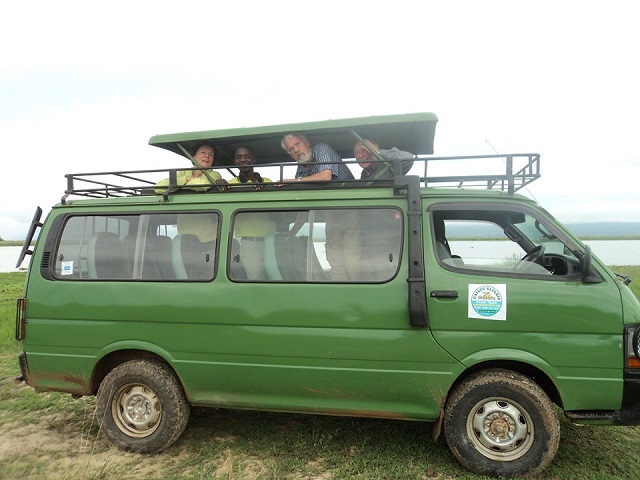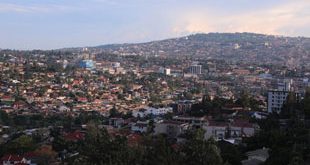
SPECIAL FEATURE | East African holidays are a unique experience for the tourists compared to other destinations. For many of them, it is the first time they are willing to go into a third-world country. They may already have preconceived ideas from the media of starving people, dilapidated infrastructure, and a myriad of unsolvable problems. However, what they find is much different. They are surprised by the warm smiles and helpful nature of the local people, the functioning societies, and the simple, laid-back lifestyle without the stresses of modern living.
Visitors enjoy the safety and peace of the countries, and it gives them a chance to explore and discover for themselves almost forgotten pleasures of life – These can be self-drive safaris or on guided tours. This, in itself, is a very different experience from what they have in their package holidays in Europe and adds to the allure of a return visit.
East African holidays are not only about the sun, palm-fringed beaches, and exciting landscapes found in this beautiful continent. They are also about discovering the other half of the world and its diverse cultures, learning about the problems people are facing in their daily lives in developing countries, and offering help.
Importance of East African holidays
East Africa comprises countries such as Rwanda, Uganda, Kenya, Tanzania and Burundi, with most important holiday gifted with the things that tourists most desire. A picturesque location where they can take their postcard-perfect pictures, a warm tropical climate. Most important holidays fall during the mid-year of November and January. The most important thing is affordability. An average holiday in East Africa will cost less than most holidays in countries abroad. This is due to the weak economic conditions in most East African countries.
During these holidays, the prices for Safari lodges, hotels, and flights are at their peak. Tourists will pay twice the normal price, to the extent that a common people would consider hiking up their rental charges. Car rental agencies also benefit from this period as the sector calls for numerous modes of tour – including self-drive holidays – Common in Kenya, Uganda and Rwanda. Here travelers rent 4×4 vehicles for self-guided tours with options of out-door camping in the wilderness. East Africa is also a good location for domestic tourism by the local residents of the region – Wildlife safaris in East Africa attract thousands of tourists each year. These holiday periods are highly regarded as a good time to escape from the hassles of daily life and take a break. Kenya, for example, is a good place to escape for a coastal holiday during the chilly and rainy weather that hits Nairobi at the end of the year. During such breaks, domestic tourism is also promoted in various methods. An example is the Mombasa residents’ golf tournament.
This is a time where tourism sector players will invite people from all over the country to come to the coast and play golf. And with the increased numbers of players, more accommodation is required. A lot of residents will take the scenic SGR train route to Mombasa for the cheaper and relaxing travel option, a good opportunity to take in Kenya. All of these various activities taking place during East African cause a ruckus in the industry that is the tourism sector. Every other industry, in some way, has its rejuvenation time during holiday seasons. People will want to make sure that there is a stable money flow, and this incites the tourism industry to prove the best recreation or relaxation services to effectively do more business in providing to a wider range of customers (domestic and international) and provides job opportunities to interested.
Growth of tourism in East Africa
Tourism in East Africa has grown significantly in recent years. This growth has started to partially alter the traditional structure of East African society. The rise in commercial agriculture, the breakdown of traditional social structures, and the impact of cash cropping on land use often hamper traditional African lifestyles and have side effects on tourism. Tourist sites, such as Maasai villages in Northern Tanzania, have become commercially viable and as a result have partially mitigated the encroachment of modernity. The Batwa people who used to reside in the rainforest of Bwindi impenetrable Forest and Virunga Mountain Ranges in Rwanda and DR Congo now live on the edges of these forests. The governments of countries with strong tourist economies, such as Kenya and Tanzania, have endeavored to exploit the economic potential of their tourist destinations.
Whether in so doing they may upset the very conditions that make countries attractive to tourists is a matter of debate. For example, for many Wildlife Safari enthusiasts, the wide-open spaces and virgin bush of the Serengeti National Park, the Maasai Mara, are a vision of what a piece of Africa should look like. But with ever-increasing human and livestock populations, pressure on land is resulting in habitat destruction and fragmentation. The loss of Serengeti’s wildlife migrations would obviously detract greatly from the unique selling points of Tanzania. Similarly, the construction of a commercial resort in a location such as Lake Bunyonyi in Uganda may be of short-term economic benefit to a small sector of society, but will have lasting detrimental impacts on the beauty and ambiance of Uganda, which are likely of far greater economic significance.
 The Independent Uganda: You get the Truth we Pay the Price
The Independent Uganda: You get the Truth we Pay the Price


